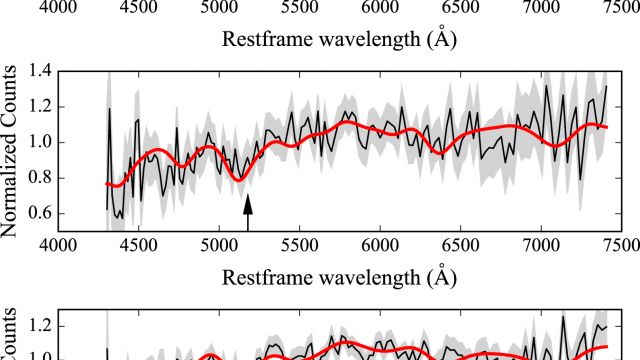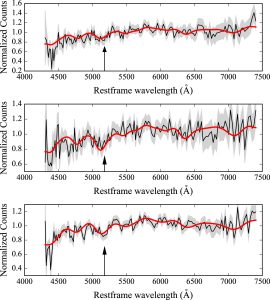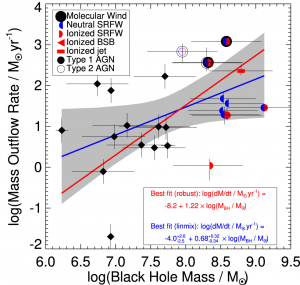A Radio Relic and a Search for the Central Black Hole in the Abell 2261 Brightest Cluster Galaxy
Burke-Spolaor, Sarah; ; Postman, Marc; et al.
The Astrophysical Journal, Volume 849, Issue 1, article id. 59, 12 pp. (2017).
We present VLA images and HST/STIS spectra of sources within the center of the brightest cluster galaxy (BCG) in Abell 2261. These observations were obtained to test the hypothesis that its extremely large, flat core reflects the ejection of its supermassive black hole. Spectra of three of the four most luminous “knots” embedded in the core were taken to test whether one may represent stars bound to a displaced massive black hole. The three knots have radial velocity offsets (| {{Δ }}V| ≲ 150 {km} {{{s}}}-1) from the BCG. Knots 2 and 3 show kinematics, colors, and stellar masses consistent with infalling low-mass galaxies or larger stripped cluster members. Large errors in the stellar velocity dispersion of Knot 1, however, mean that we cannot rule out the hypothesis that it hosts a high-mass black hole. A2261-BCG has a compact, relic radio source offset by 6.5 kpc (projected) from the optical core’s center, but no active radio core that would pinpoint the galaxy’s central black hole to a tight 10 GHz flux limit < 3.6 μ {Jy}. Its spectrum and morphology are suggestive of an active galactic nucleus that switched off > 48 {Myr} ago, with an equipartition condition magnetic field of 15 μG. These observations are still consistent with the hypothesis that the nuclear black hole has been ejected from its core, but the critical task of locating the supermassive black hole or demonstrating that A2261-BCG lacks one remains to be done.

apjaa9064f2_hr
Normalized object spectra (black lines) and the 68% confidence intervals on the observed spectrum fluxes (gray shaded areas) shown for A2261 knots 1, 2, and 3 from top to bottom, respectively. The best fits obtained for each knot are shown as red lines. The arrow indicates the rest-frame wavelength of the Mgb spectral feature.
Prev
Next
The above is one way to do it.
- Normalized object spectra (black lines) and the 68% confidence intervals on the observed spectrum fluxes (gray shaded areas) shown for A2261 knots 1, 2, and 3 from top to bottom, respectively. The best fits obtained for each knot are shown as red lines. The arrow indicates the rest-frame wavelength of the Mgb spectral feature.
- Fig 14 from Rupke et al. (2017). Shows a positive correlation between log outflow mass and log black hole mass.
This is the radio relic paper.
import antigravity
for i in [1 2 3]:
print i



